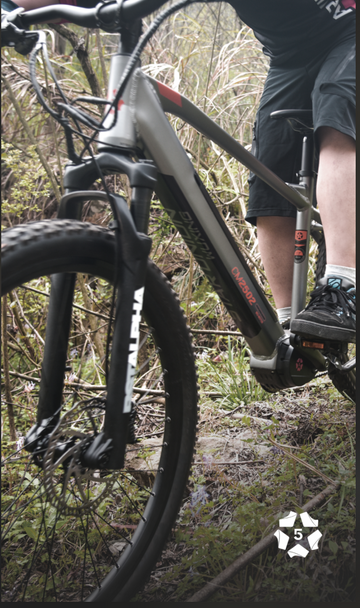
As winter approaches, cold temperatures, moisture, and harsh road conditions can take a toll on your bike’s hydraulic disc brake system. To ensure your brakes perform at their best during the colder months, extend their lifespan, and improve riding safety, here are the key maintenance tips for winter hydraulic disc brakes.
1. Check and Replace Brake Fluid
Brake fluid (either mineral oil or DOT fluid) can thicken in low temperatures, affecting brake response. Here’s what to do:
· Use the manufacturer’s recommended brake fluid and make sure the fluid is in good condition.
· If the brake feel becomes stiff or delayed, consider replacing the brake fluid.
· Never mix different types of brake fluids, as it can compromise brake performance.

2. Regularly Inspect Brake Lines
Cold weather can cause brake lines to become brittle or age prematurely, which can affect brake fluid flow.
· Check the brake lines for cracks, leaks, or signs of hardening.
· Ensure the connections are sealed properly to prevent air from entering the system.
· Replace any old or damaged brake lines as needed.
 3. Clean and Maintain Brake Calipers
3. Clean and Maintain Brake Calipers
During winter rides, mud, salt, and moisture can accumulate on the brake calipers, impacting braking performance.
· Clean the caliper surface with a non-corrosive cleaner to remove dirt and grime.
· Check if the pistons are moving smoothly, and if not, use piston lubricant for maintenance.
· Ensure the brake pads are properly installed to prevent uneven wear.

4. Check and Replace Brake Pads
Brake pads tend to wear faster in cold and wet conditions, reducing braking efficiency.
· Regularly check the thickness of your brake pads and replace them if they fall below the manufacturer’s recommended thickness.
· Consider using brake pads designed for winter conditions, such as metallic sintered pads, for better durability and braking power.
· Make sure the brake pads are free from oil or contaminants to maintain effective friction.
5. Proper Storage and Parking
Correct storage practices can reduce the risk of damage to your hydraulic disc brake system in freezing temperatures.
· Avoid leaving your bike outside in extremely cold weather for prolonged periods.
· If storing the bike for a long time, consider tying the brake levers to reduce the chances of air entering the system.
· Before riding, pull the brake levers a few times to ensure the braking system is functioning correctly.

6. Protect from Ice, Snow, and Salt
Salt and de-icing agents used on roads can corrode brake components.
· After riding, rinse the brake components with warm water to remove any salt residue.
· Lightly lubricate metal parts (but avoid getting any on the brake pads or rotors) with a rust-preventative lubricant.
· Regularly check for loose or rusted bolts on your brake system.
7. Test Brakes Before Riding
Always test your brake system before you ride, especially in cold conditions.
· In a safe environment, test the brake feel to ensure it’s smooth and responsive.
· Check that both front and rear brakes provide balanced braking force, with no delay or odd noises.
· In colder temperatures, allow the brakes to warm up before riding for optimal performance.
Maintaining your hydraulic disc brakes during winter not only improves safety but also prolongs the lifespan of your brake system. Follow these maintenance tips to keep your bike’s braking performance top-notch throughout the colder months, ensuring smooth and safe rides.




